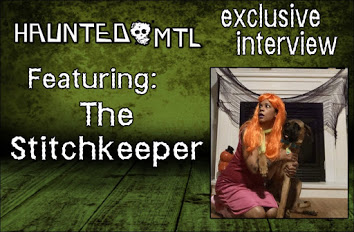
Interview: Crawling into the Crochet Crypt of ‘The Stitchkeeper’!
More Videos
Published
4 years agoon
By
J.M. Brannyk

In this interview we get inside the mind of The Stitchkeeper herself, and dive into what makes her tick, what makes her sick, and what drives her create the ghoulish monsters you can find at @thestitchkeeper on Twitter, on Etsy and Patreon.
Hello, Stitchkeeper (@thestitchkeeper), welcome to the party. First of all – Happy Black History Month! Second is, of course, Happy Women in Horror Month! Thanks for joining at Haunted MTL; I’ve been a long-time Twitter fan and can’t wait to learn more about you and your art.
Can you start us off with who you are and a little bio about yourself?
The Stitchkeeper: My name is Chelsey Scully, but when I’m crocheting, I go by the Stitchkeeper. I was born in Edmonton, Alberta.
To ensure my safety during the zombie apocalypse, I moved to a literal island – Prince Edward Island to be exact – where live with my husband, Mike, and my daughter, Dana, my best friend over the past 17 years, my cat, Dahmer, as well as our bullmastiff, Bruce.
I work part-time as a receptionist, and work full-time crocheting horror-related dolls, then whoring them out for dolla dolla bills. Oh yeah, I do the mom thing, too, 24/7. In my spare time, I enjoy watching horror films, reading and I recently took up learning Latin.
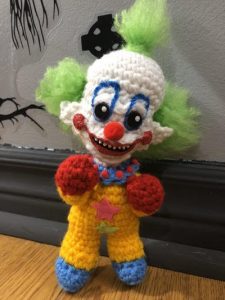
Let’s talk about the very beginning. Tell me your first interactions with horror, as a genre and as a hobby. What categories drew you in most (e.g., movies, stories, Halloween, songs, etc.)?
I was watching horror for as long as I can remember. My dad was a big horror fan, so I was watching the old universal monsters movies, the Outer Limits, King Kong, stuff like that, since I was a kid. I loved monster movies as a kid. I couldn’t wait to see what the monster looked like in a film. And the campier the monster, the better.
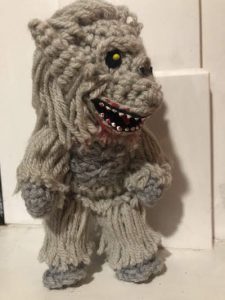
Who were some of the first spooky icons in your life and why did they interest you?
The first spooky icons I remember are the characters in The Hilarious House of Frightenstein (**interviewer’s note: I had to look this up because I’m not Canadian**). I’m not too sure why they interested me so much, but I do remember watching that show religiously on TV as a child. I loved it. I’ve always wanted a decent box set of that series. Some company should get on that.
I also loved the wolfman; I loved the transformation between man and wolf. I just thought it was the coolest thing. Scooby Doo was also my jam back in my childhood days. Hell, Scooby Doo is still my jam even in my adult days. My first slasher icon though was Jason Voorhees. I remember watching that when I was about 8, maybe 9? And I was terrified. And I loved it. And right then and there, I realized I was going to be a horror addict for life.

Tell me about your craft. How and why did you start crocheting? Where there other projects or crafts before you were like, “oh, this is it!”?
I have always been into crafts. With crafts, I just get it. Like, if I can see how it is done, I will do it. It may take me a couple tries, but I will get it and do a semi-decent job. I never really committed to a craft before I started to crochet. I would maybe paint here or there, make a decoupage or something. I always loved crafting because it was something I understood and so I always felt relaxed doing it.
I learned to crochet at a very early age. My grandma taught me when I was around 7-8 and I could just make small blankets for my dolls and stuff, nothing too serious. I didn’t really pick it up as a hobby until about 10 years ago. I saw this book called ‘Super Scary Crochet’ and the projects were so adorable that I had to try and make one. Luckily, the lessons I learned as a child came back to me and my very first doll, from a pattern in that book, turned out surprisingly decent. I loved it, and I was immediately just like, “This is amazing, I can make any doll I want’’ and after a few years of practice, I felt I was good enough to start selling my work. I still have that first doll, too, displayed proudly in my office.
When I crochet, I go in a trance, and I know that sounds crazy, but I am extremely focused when I make these dolls. Especially with the larger crochet pieces, I couldn’t even tell you how I made it. I just crochet and then BAM its created. There’s an energy, that goes into these dolls. I need to be in the right mood to create a doll, so I usually watch the film while I’m crocheting, just to make sure I stay in the right head space so that I can create the character perfectly. If I get a project in my mind, sometimes it will just nag and nag at me until I do it. I’ve gotten out of bed at 3 am just to start a project so I could get it off my mind. So I guess my craft is a blessing and a curse.

What were some of your first projects?
My first project was a little possessed girl, Sam from Trick r Treat, Jason Voorhees, and I made a pretty mean Predator back in the day, as well.

So far which creation has been the most challenging? Did you curse it or love it?
I once created a huge Q the winged serpent. He was a challenge and a half and took almost a month to complete. I loved making him, though. He was a blast.
I do most of my cursing of projects when I have to make teeth and/or hair. Teeth and hair are the bane of my crochet existence. I think it’s because not only is it tedious, but with my teeth and hair methods, if I make a mistake, I done f—ed up the whole doll and have to start again. So the detailing has to be done painstakingly slow and steady.
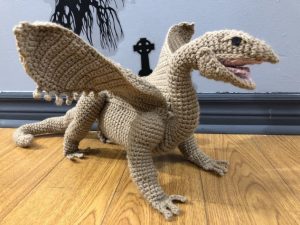
You are a human of color and a human of female gender, please allow me to pick your brain about some of your thoughts. What are some challenges you see for people of color and women in horror – both as a genre and also as a profession? Have there been any changes in the narrative that you’ve seen or, to quote King’s Dreamcatcher, “SSDD”?
The challenges that I saw in the past was getting people of colour to be respected in horror films. They have been in the horror films since I started watching them in the 80s but its almost like they were just put in there to appease the black crowd. They never really did much other then smoke weed, save the white folks, then die. They were stuck in this horrid cliche.
I remember watching The Craft and Rochelle came on the screen and I was like YES a black woman with whom I can completely relate to because I am also a black teenager going to a predominantly white school and so I am LITERALLY going through the same shit as her and then we got like, shit all of her backstory and that was when I realized that black people were just in film to appease the black crowd. Like, here’s a black person, now shush and watch them help these white people with their problems.
As a black female, I want more. I want black people with a backstory in horror, I want black people with a purpose in horror. Representation matters. I know now that I matter, but as a teen, yeah, I definitely felt that black people were not important because of that film. And it sucked.
I am definitely seeing changes within the past couple of years. I’m seeing more ‘Bens” in horror. More black people who are in the film with a purpose. I think Jordan Peele is a shining example of someone who is doing a wonderful thing for the black community in horror. His films, are creating stories that revolve around predominantly black characters and he is doing it without making the film feel like ‘blaxploitation’ films. These are horror films with black people being represented as everyday people. Not superhero’s like Blade, not monsters like Candyman, just regular, everyday black people having to deal with crazy ass situations. He is showing the world how black people should be represented in horror and I thank him so much for that. I also think he should remake The Craft just to cater to my petty ass. Lol.

In your opinion, who is the most iconic person of color and/or female character in horror, and why do they resonate with you?
I’m going to have to go with Ben (Duane Jones) in Night of the Living Dead (1968) I remember watching that movie when I was young with my Dad. My dad explained to me how happy he was when he saw a black man take the lead role in a movie. I think Ben showed my Dad, and other black people at the time, that black people can rock a lead role in a film. That black people CAN matter. I think the character was also very important in showing white people that its ok to support black people. I mean, for the whole film, they were rooting for a black man. There were other white people in the film, but the black man was the one they wanted to survive. I think at the time that was probably a super confusing feeling but it was a feeling that needed to be presented to the white community. I like to hope that some white folks left the theatre with a different perspective on how they treat black people. I think Night of the Living Dead was one of the first popular films that showed exactly how representation of black characters in film matters.
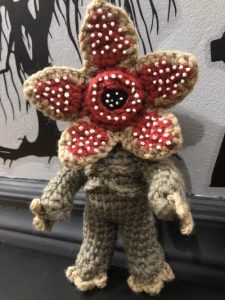
And for fun, who is the most iconic white dude in horror, etc.?
As for the most iconic white dude, I’m going to have to go with Bruce Campbell as Ash Williams. I mean, the Evil Dead franchise has been around forever and every time they come out with something new, they f—ing nail it. I have NEVER been disappointed in Evil Dead anything (even the musical was fantastic) I think Ash as a character, is relatable in so many ways. I mean, he’s just a typical dude, no special powers, and yet he manages to save the world numerous times. He’s the poster boy of ‘you can do anything if you just try’
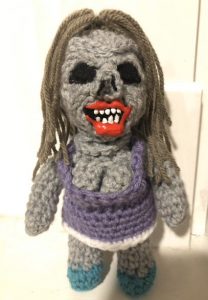
As a Mama of Horror with an adorable spawn, how do you use horror as a positive influence in your lives? How to you use horror to engage and interact with her? Have there been some lessons learned or taught by Mr. Pinhead or Mrs. Voorhees (e.g., horror influences)?
I think that, what we have to remember with horror, is that it’s all not slashers and blood and guts and demonic possessions. I don’t watch the gory and psychological stuff with her simply because she wouldn’t enjoy it. When I say that I watch horror with her, its more of the monster stuff. The fun stuff. We love to look at the costumes of the different monsters, and I’ve always been into horror FX and how its done and I love explaining it to her, then we go and look for videos of the monster being made. We appreciate the art of the film.
I cant say I’ve had any lessons from horror characters (except maybe a list of what NOT to do as a mother) but since I became a mom, some films hit me a different way emotionally now. Films that involve children like Aliens and Cujo, and even Pet Semetary. I sympathize more with the parents because now I fully understand what it means to fight for your child’s survival or the emotions involving losing a child. I mean, I always got kinda upset when kids got hurt in films, but now, ugh, I need like, a week to get my emotions in check after watching a film if a child dies.
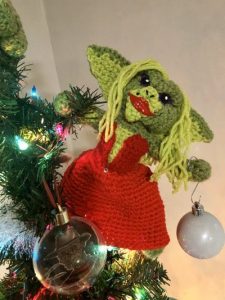
Tell me about your Patreon and the different tiers. How can people get your stuff? Do you accept commissions?
I started my Patreon as a way to make selling the dolls more fun. Because my dolls are hand-made, I can only comfortably make about 20 a month, so I figured it was only fair that people who support my Patreon page get first dibs at purchasing them.
Any tier you support gets you sneak peeks at the dolls I am making for the month. My most popular tier is the $5 tier, which gets you a ballot in my monthly draw to win a doll. I also have a $40 tier which gets you a small crochet horror related character as well as a ballot. The larger tiers are where you get a doll. Pretty much, if you donate to the larger tiers then you are guaranteed one of the dolls from the recent months collection.
There are also tiers for receiving a custom doll of your choice and even a tier to just flat out receive all the dolls in my monthly collection. At the end of each month, any dolls that do not become Patreon perks are placed in my Etsy shop where the public can purchase them. They prices also go up once the dolls are in my Etsy shop so if you want a deal, go through Patreon.

What’s in the future for the Stitchkeeper or is there anything you’d like to plug?
I have some vague ideas that I want to do this year. I’m actually considering more stop motion videos with the dolls. Maybe remake famous horror films in yarn form. I would eventually like to practice writing crochet patterns as well, so everyone can learn how to make dolls.
Last question: which one is more worthy of the internet’s adoration – Baby Tall Man (from Phantasm) or Baby Pazuzu?
Baby Pazuzu would be pretty f—ing adorable. I’m gonna go with him.
Be sure to check out The Stitchkeeper on Twitter, Patreon and Etsy. Not only is she talented as hell, but she’s hilarious and definitely worth the follow (and some of your sweet dolla dolla bills).
When not ravaging through the wilds of Detroit with Jellybeans the Cat, J.M. Brannyk (a.k.a. Boxhuman) reviews mostly supernatural and slasher films from the 70's-90's and is dubiously HauntedMTL's Voice of Reason. Aside from writing, Brannyk dips into the podcasts, and is the composer of many of HauntedMTL's podcast themes.

You may like
-
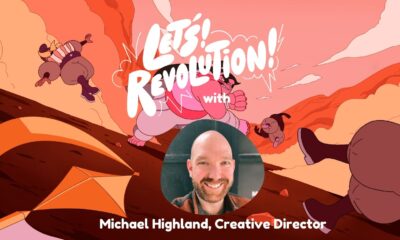

Interview with Creative Director Michael Highland: Let’s! Revolution! @ PAX
-


Interview with Game Dev Julian Creutz: Quest Master @ PAX
-
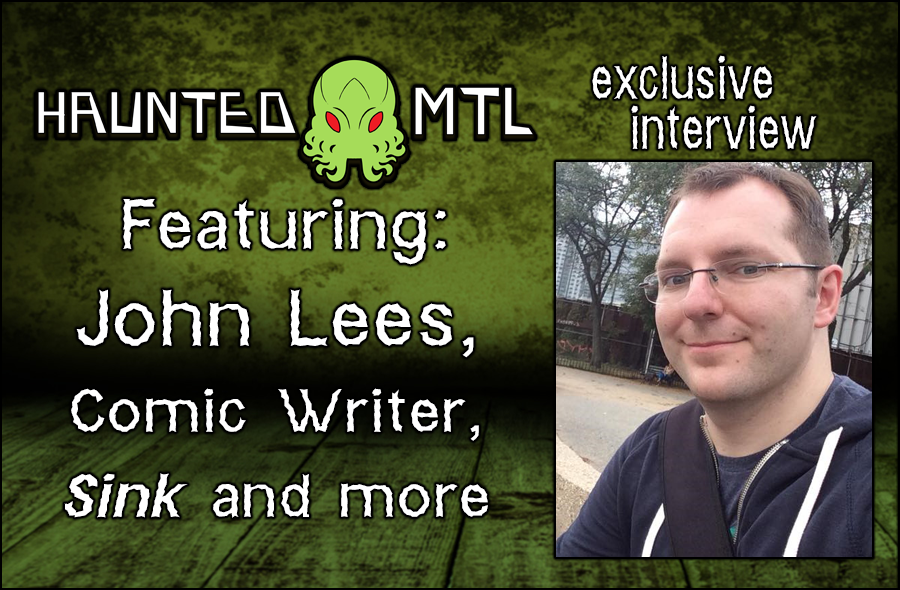

Interview: ‘Sink’ Writer John Lees
-


Interview: Cross-Stitch Artist Miriam Owens
-
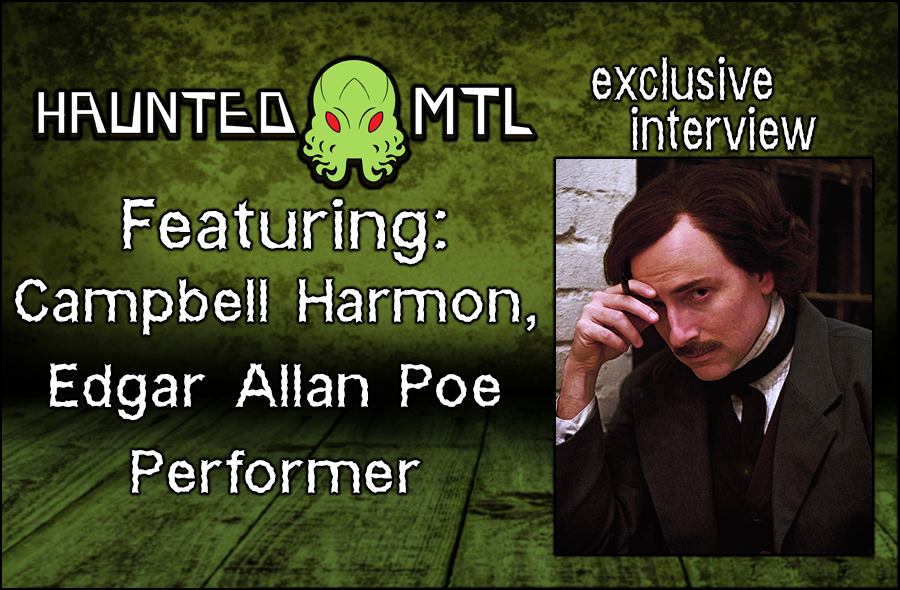

Interview: Poe Performer Campbell Harmon
-


Interview with Haunted MTL’s very own Nicole C. Luttrell
Gaming
Interview with Creative Director Michael Highland: Let’s! Revolution! @ PAX
Published
18 hours agoon
April 19, 2024
Another game I had the chance to play at PAX East was, Let’s! Revolution!, a Minesweeper-inspired roguelite puzzle game by animation (and now game) studio, BUCK. I talk more about the game itself in another post. Here, I wanted to highlight the conversation I had with Michael Highland, the Creative Director for Let’s! Revolution! and his journey through video game development.
How did you become involved in video game development?
I studied digital media design in college; this was before there were many programs dedicated to game development. After graduating, I self-published a mobile game called Hipster City Cycle with friends. Over the next few years, I slowly got more freelance work as a game designer, and eventually landed a full-time role at thatgamecompany working on the follow-up to their 2012 GOTY Journey. I worked my way up there and was eventually the Lead Designer on Sky: Children of the Light. Working at thatgamecompany opened a lot of doors professionally. I eventually wound up at BUCK, where I saw the opportunity to help establish a new game studio within a very vibrant existing creative culture.
What has been the most challenging aspect of the development process?
Each studio has its own unique issues based on the people involved. There are commonalities like the need to fight feature creep and building consensus around ideas early in the process when all you have is an abstract grey box prototype to react to. At BUCK the biggest challenge has been channeling the abundance of creative energy and talent into a shippable product. There’s a ton of enthusiasm for games within the company, and without clear product-centric goals (who is the target audience, what platform are we releasing on, what’s the marketing strategy), projects have the tendency to spiral out of scope. Another challenge has been building credibility with publishers. BUCK has an amazing pedigree for animation and design, maybe the best in the world, but when we initially pitched ideas to publishers, they all said the same thing: looks great, but until you’ve shipped a game, you’re too high-risk. That’s what led to us self-publishing Let’s! Revolution! Now that we have a well-reviewed game out in the wild, I feel confident we’ll have more luck with publishers.
BUCK primarily has its roots in animation, what led the decision to start branching into video game development?
It started with a general excitement about the medium and a desire among the staff to work on a game. Leadership at BUCK is all about providing the staff with exciting creative opportunities, and getting to work on a game, is, for some, a creative dream come true. And putting BUCK content out in the world is a point of pride and a boost to morale. From a business perspective, the fact we can staff out game projects with the top animation and design talent in the world is a huge advantage. We’re already starting to see new opportunities for the service side of the business based on the success of Let’s! Revolution!
The art, unsurprisingly, is delightful. What were some of the priorities during the character design process and how did those influence the final hero designs?
Our Art Director Emily Suvanvej really led the charge on the look of the game. There are obvious influences like Studio Ghibli, Moebius, and Steven Universe. My shared goal with Emily was to make something together that reflected the diversity of the team’s artistic and lived experiences. The artists put so much love into the character designs and animation, it really shows.
Some of the primary game mechanics take inspiration from Minesweeper, what was the process like to create your own interpretation of those classic mechanics?
This article goes into depth on this topic. The TLDR is that we took a very iterative approach, at each stage trying to identify what was working about the prototype and lean into that. The initial game concept came together relatively quickly in part because our goal for this project was just to finish a game. We just focused on what was good and kept building on it. I wouldn’t say the final game is “perfect” – but we wound up with a much bigger and higher quality experience than I expected by not letting perfectionism get in the way of making good better.
Is there anything else you would like to plug or that you think is important for people to know about Let’s! Revolution! or other upcoming projects?
The music and sound design for the game is stellar. We worked with a creative audio company called Antfood and they knocked it out of the park. The audio got an honorable mention from IGF, which I think is extra impressive because most of the other games were audio-centric titles with some unusual hook to the sound design. For the OST, Antfood reworked all of the music from the game into a continuous flow, like a concept album. It’s so good. I love working with them.
Gaming
Interview with Game Dev Julian Creutz: Quest Master @ PAX
Published
2 weeks agoon
April 4, 2024
As mentioned in previous posts, I had the opportunity to demo a pre-early access version of the game Quest Master alongside the Lead Developer, Julian Creutz. Quest Master is a Legend of Zelda and Super Mario Maker inspired dungeon crawling and building video game. While the other post covers the game itself, this one covers the inspiration and vision for the game as told by Julian.
How did you become involved in video game development?
I’ve been a huge gamer, and especially a Zelda fan, ever since I was a little child when my dad put a GameBoy Advance with “The Legend of Zelda: A Link to the Past” into my hands. Sometime during elementary school I started dabbling with game development using visual tools like Scratch and GameMaker. I quickly got into making Zelda fan games and had dreamt of the day when I would make my own Zelda game one day. Over the years I’ve honed my game development and programming skills, resulting in where I am today.
What has been the most challenging aspect of the development process?
Developing Quest Master is essentially like making two games at once – the making and the playing part. Both of these game elements have to be equally as polished to form a cohesive one.
The most difficult thing by far about the game’s development has been to make the maker mode experience intuitive for first-time users and people who know nothing about Zelda-like games, but at the same time powerful and complex enough to allow creating anything you could dream of.
One good example is the gameplay feature to link certain parts to others, like linking a pressure plate to opening a door. We’ve been through countless iterations affecting both the visual, gameplay and user experience aspects of it – I hope that the one we are using right now is the final one!
Quest Master takes a lot of inspiration from classic dungeon-crawlers like the Legend of Zelda franchise. What about these games was so enchanting to you and how does Quest Master try to capture that enchantment?
As described earlier, I’m like the biggest Zelda fan, which I’m sure shows. My gripe with many Zelda-likes on the market is that none perfectly capture the feel of the classic entries… there’s always something missing.
I confidently believe that Quest Master differs from that greatly. We are trying to make Quest Master feel like an in-house 2D Zelda like Nintendo used to make, just from an indie team like ours. Many people crave the classic 2D entries, just like I do.
What emotions do you hope the player will experience while playing Quest Master? What design choices were made to assist in that desired atmosphere?
A big aspect of Quest Master is its local multiplayer. The game is deliberately designed to work flawlessly with that, and makers can create specialized puzzles in the game that require all players to work together for example. The result is both rewarding, funny, and sometimes infuriating altogether, for example when one of your buddies throws you into a hole.
As a community dungeon maker, what features are you most excited to see implemented in player-made dungeon crawls?
I’ve already been hugely amazed by the creations of the existing Quest Master demo. With all the new features the game will launch into Early Access with, I bet this will be tenfold. I myself always enjoy the brain busting puzzles people come up with. Other things I also like a lot are the unintended mechanics the players find, which dynamically emerge from the many, many gameplay systems working together.
What’s it been like working with Apogee, an indie publisher who goes back to the early 1990’s and has a long legacy of terrific game releases?
I’ve only had very few interactions with game publishers in the past, and Quest Master is my first large scale commercial game project. There’s preconceived notions floating around everywhere on the internet about how evil game publishers are and how much better you would be off self-publishing your game. Contrary to that, working with Apogee has been nothing short of supportive and family-like. They are very invested in the project, and they have many Zelda fans on the team also helps a lot. They are supercharging the potential of Quest Master and without them the game would not be where it is today.
Is there anything else you would like to plug or that you think is important for people to know about Quest Master or other upcoming projects?
Early Access is just the beginning! Quest Master will be hugely expanded upon during its Early Access phase, with many more themes, dungeon parts and entire new gameplay features coming in short intervals and a rapid update schedule. There are always new things around the corner. For example, things like the singleplayer story campaign and the overworld maker will be most likely not be part of the initial Early Access release, but we will make sure to build anticipation by introducing bits and pieces into the world of Quest Master to build up to that.
I hope you are looking forward to it as much as I am!
Interviews
An interview with creator of Kaidankai, Linda Gould
Published
2 years agoon
September 4, 2022
I was fortunate enough to interview Linda Gould about her beautifully eerie podcast, Kaidankai. I hope that you all enjoy getting to know her and her creepy work as much as I did.
Your recent collection is called Unpleasantville, a collection of stories from a singularly creepy town. What inspired this project?
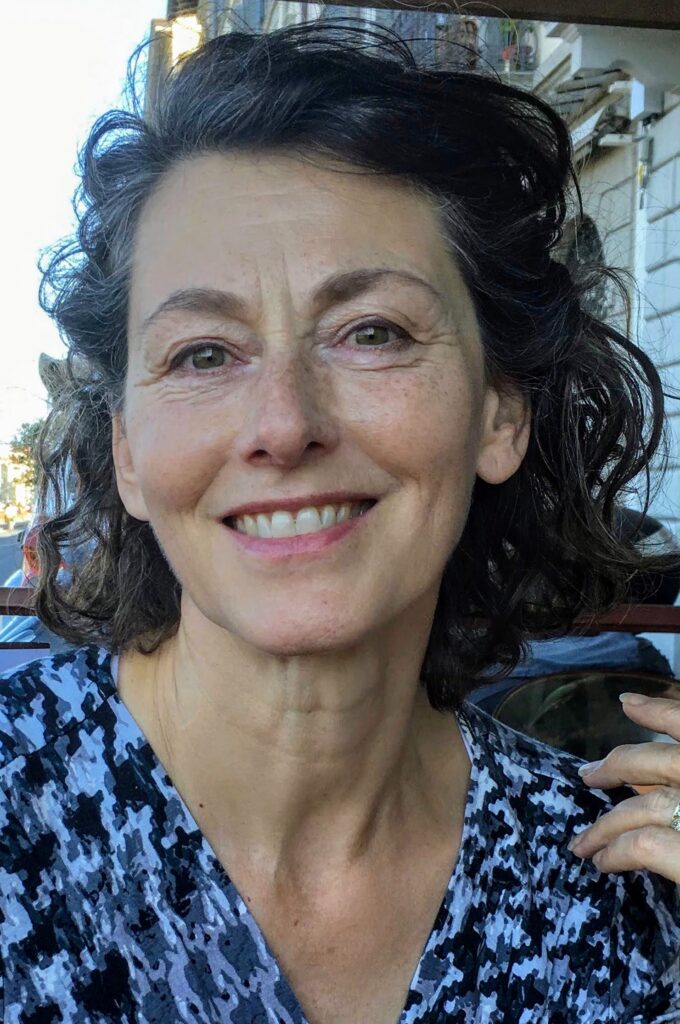
One of the only poems I related to when in high school was Spoon River Anthology (SPA). For those who don’t know it, SPA, it is a collection of poems about life in a small town as told by the ghosts of the residents in that town. The poems were based on real people, and the anthology burst the bubble on the idea that country life was idyllic. I loved its irreverence and was captivated by the idea that ghost stories, which I always loved, could be literary, taught in high school AP English classes! For the Kaidankai, I asked listeners and contributors to pick their favorite poem and read it for me. Then, I did a special presentation of their readings for the podcast. Many people had never heard of SPA and were so happy to find it. So many people, way more than I expected, sent in their readings, and they were just awesome.
That made me wonder what a modern version would look like. Since the Kaidankai audience and contributors are all around the world, I couldn’t pick one place without excluding someone, so I made up a name and a few landmarks that anyone, anywhere could relate to and sent it out to see what would happen.
Unpleasantville is a shared world, with many writers telling their own stories. What was it like, working with so many writers in this shared space?
Well, that describes the Kaidankai podcast in general. People from Asian countries, Australia, North America and throughout Europe contribute. Sometimes, before I reject a story, I have to read it a couple of times to make sure that it isn’t just a different storytelling technique that I don’t understand or relate to. I force myself to explain to myself why a story isn’t a good fit. I’m not sure that I would take that approach if all the stories came from Western writers.
Of course, Unpleasantville is only part of your overall show, Kaidankai. What can you tell us about the show? Where did the name, Kaidankai, come from?
First, I have to tell you how much I love this podcast. The podcast started August 1st 2021 and was initially going to last only for 100 days in order to tell 100 stories. I live in Japan and in the last several centuries, people would go on pilgrimages to famous shrines during the month of August. Pilgrims from all over Japan would meet, and to pass the time, they would tell ghost stories, just like we do in the west around campfires. In Japan, they lit candles, 100, and as each ghost story was told, a candle was blown out. So, as the night progressed, as the candles were blown out one-by-one, it got darker and the stories became scarier. Imagine being in a deep forest or at a pilgrims inn inside a deep, dark forest. Imagine all the creaks, howls, screeches and mysterious sounds that surround you as the candles become fewer and fewer and how those sounds get closer and closer. It raises the hair on the back of your neck and gives you chills. And THAT was the purpose of kaidankai–to cool people off during Japan’s crazy hot and humid summers while entertaining people at the same time.
That is the basic outline of the Japanese storytelling tradition called kaidankai. Some might have heard of it as hyakumonogatarikaidankai because I think there was an anime made around it. A lot of the Japanese scary woodblock prints come from the stories told at that time, and the tradition of telling ghost stories in August holds true to this day, although in a different iteration. And the podcast was meant to be just another iteration of that. I was going to upload one podcast a day for 100 days, then start deleting them one-by-one after about a month. BUT, when it was supposed to end, people wrote me and said how much they would miss it, that they didn’t want it to end. So, I changed it to a weekly podcast. A few people asked to have their stories removed as originally planned, but most are still in the archives.
Most of your episodes are quite short, averaging from eight to twenty episodes. Was it an intentional choice to focus on such short form horror, or just a coincidence?
A little of both. Some people have sent in longer stories and, if I like them, I’ll read them on the podcast. But, I really wanted to stick with the short story format because I wanted to keep the feeling of people just sitting around a campfire or in a candlelit room telling their ghost stories. If anyone talks too long at a campfire, people get restless and tune out. And, I think if people are listening in the car or while cooking dinner, they want something that they can complete.
Your podcast has over 150 episodes. This is an impressive amount of spooky work. What can you tell us about creating that many episodes?
Well, like anything, the more you do it, the better it gets, lol. If you listen to the early episodes, they are definitely not as good as the later ones, mainly because the mic got a lot better. My readings have also improved, because a few of the earlier episodes had a professional reader, Michael Rhys, so I could learn from listening to him. Other people have read some of the stories, too (not just the Spoon River Anthology project) and it is really nice to have a diversity of voices, I think, but others have told me not to have different readers because the sound quality varies and it dilutes the branding of the show. I’m not really sure what to think of that. I mean, definitely, the sound quality varies, but unless the sound is just awful, in which case I wouldn’t upload it, I like the authenticity of it.
It’s a surprising amount of work, especially at first. You need to research the best way to do an intro and outdo (I didn’t), the best equipment to make quality sound (I didn’t) and how to promote it (I didn’t). I’m amazed when I look at how I just barreled into this with very little planning that people kept listening. But that attests to the need to have good stories, which is the most important thing.
Many horror podcasts drop off soon after creation. What’s helped you keep at this so long? I’ve been so lucky that writers from around the world have trusted me with their work. I can’t accept all the submissions, but I do read them all (like I said, sometimes more than once). At several times during the podcast, I’ve mentioned how much I love the diversity found in the stories featured on the Kaidankai, and that is 100% true. I love that there are ghost and vampire and monster stories, that some are cute and some or gruesome, that they include folktales and horror from around the world, and that they are presented as poems and prose. You never know what you will get when you tune into the Kaidankai, just like you don’t know what you will get when you sit around a campfire telling stories. For some people, maybe they don’t like that one day will be horror and the next day an atmospheric poem about a haunted forest. But I do, and the Kaidankai seems to be filling a niche for others, too. So, as long as people want to share their stories and listeners for those stories, I plan to keep it going.
After your Unpleasantville collection, what’s next for Kaidankai?
My dream is to have artists listen to a story and feel inspired to create something based on that story. I’m working on a YouTube channel right now that would feature a few of my favorite stories from the archive. I hope to have it up in time for October and Halloween. It might have to have the logo run through the whole reading like most YouTube videos have, but my dream would be to have an artwork of some sort as the visual element that relates to a particular story instead of the general logo. There are so many amazing artists in the horror/ghost/supernatural genre, just like there are so many writers. It would be great to be able to showcase a visual element to the stories, too.
Aside from your podcast, are there any other projects you’re working on?
There is White Enso, which is an online journal that features artwork of any kind that is inspired by Japan. WE’ve had quilts, poetry, photography, short stories, etc. And I’m always trying to write and finish my collection of short stories. I call myself an on-again-off-again writer because I’ll work so intensely for a few months on my writing, then will get involved in something else and not write a word for a year.
Is there anything you wish I would have asked you about, that I didn’t think to?
If there is one thing I would want people to come away with when they listen to the podcast it is the universal appeal of ghost and supernatural stories. People from all over the world write such stories, and there are similarities as well as differences in how they are told. People who have a poetic mind can write the most beautiful, atmospheric stories about ghosts or monsters, and on the other end of the spectrum is someone who writes slasher stories. But there is something in all of us that embraces the mysterious, and when you tune in to listen to the Kaidankai stories, they aren’t really going to scare you, they aren’t for the most part, horror, but they will entertain you and remind you that the mysterious can connect us no matter where we are in the world.
Where can we find you online?
This link will take you to the stories, the podcast links and how to submit.
https://www.whiteenso.com/kaidankai-ghost-stories.html
(If you liked this post, you can check out another interview I did here.)


